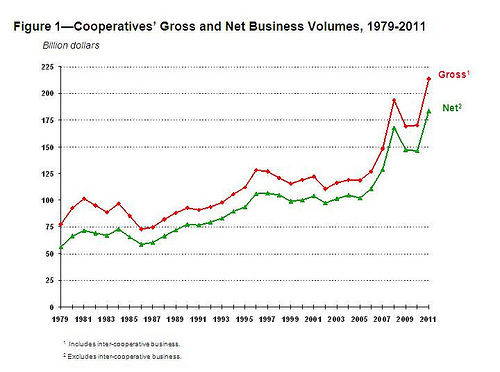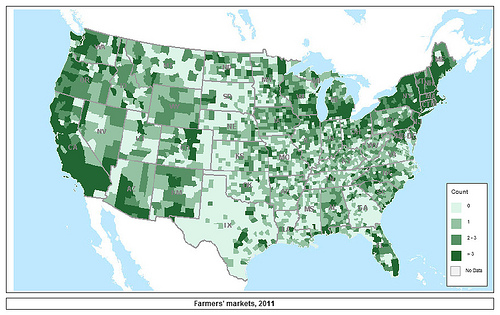
Fresh broccoli in bins at the Orange County Food Bank. With a Federal-State Marketing Improvement program grant, the California Association of Food Banks was able to dramatically expand its Farm to Family program and bring more nutrient-dense foods to area food banks. Photo courtesy Ron Ploof
Sometimes it can take a while to turn a good idea into a successful venture. At USDA, we understand the value of research, and by providing resources to get things started at the local level, we often see amazing results that have positive impact for farmers, agribusinesses and consumers across the country. Read more »

FNCS Under Secretary Kevin Concannon and FNS SERO Regional Administrator Don Arnette meet the Student Wellness Team from North Beach Elementary School, Miami Beach, Fla., during a recent visit to the school. (USDA photo by Debbie Smoot).
North Beach Elementary School in Miami Beach, Florida was recently recognized by USDA’s Food and Nutrition Service as a HealthierUS School Challenge award winner for their outstanding school meal service. While there, we learned about the school’s wellness program which contributes significantly to a healthy learning environment.
“The school wellness activities have helped lead the way in the fight against obesity,” said Michele Rivera, Physical Education/Wellness Coordinator for North Beach Elementary School. “We have countless activities in our school led by students, parents, administrators and community members who share a passion to make our school a healthier place to learn. Students have numerous opportunities, beginning in Pre-K, to learn how to eat healthy and to understand the importance of leading a healthy lifestyle.” Read more »

Cooperatives' gross and net business volumes, from 1979-2011. Click image to enlarge.
Since 1930, America has observed National Co-op month in October and what better way to celebrate the strength and vigor of cooperatives in the United States than to read a new USDA report, which notes that farmer, rancher and fishery cooperatives posted record sales and income in 2011, surpassing the previous record sales year of 2008 by $10 billion. Not only that, cooperatives bested the old income record by $500 million. Net income before taxes for all agricultural co-ops was a record $5.4 billion, eclipsing the previous high set in 2008. Net income was up more than 25 percent, or $1 billion, from 2010. Read more »

Number of Farmers Markets per County, 2011 (darkest areas have higher numbers). More than 7,800 farmers markets have sprung up across the United States, up from roughly 1,700 in 1994.
This post is part of the Science Tuesday feature series on the USDA blog. Check back each week as we showcase stories and news from USDA’s rich science and research profile.
Interest in local and regional food systems has expanded in recent years. The evidence is everywhere: from the number of farmers markets more than doubling nationwide since 2004, to the rising popularity of “community supported agriculture” (CSA) participation, to the increasingly common sight of restaurants and retail grocery outlets stocking and promoting meat and produce from local farmers and ranchers. This consumer trend has implications for the farms that supply these markets, firms across the retail supply chain, and policy makers at the federal, state and local levels that often promote local foods in various nutrition, food assistance and community development programs. Read more »
Over the last three years, USDA’s Agricultural Marketing Service (AMS) has worked with the peanut and dairy industries to create a government-hosted electronic trade document repository. The eTrade Document Exchange (eTDE) System, funded by USDA’s Foreign Agricultural Service through the Market Access Program, makes electronic trade documents, including official certificates, available securely through the Internet to facilitate the domestic and international movement of U.S. agricultural products.
This system provides users with the ability to access commodity-related trade documents as PDF files that can be used to verify hard copy documents or to eliminate the use of hard copy documents entirely. It allows authorized product owners, buyers, carriers, brokers, and government port agents access to critical information around the clock and around the world.
USDA collaborates with trade associations to provide this information as an export service to the supply chain. The certificates available in the repository are provided by a variety of document providers. Some certificates are provided by USDA, some by programs under department certification, and some from commercial sources that operate independently. USDA validates the identity of each document provider and has security controls in place to ensure that certificate data obtained from providers remains unaltered once it is posted to the site. Read more »




